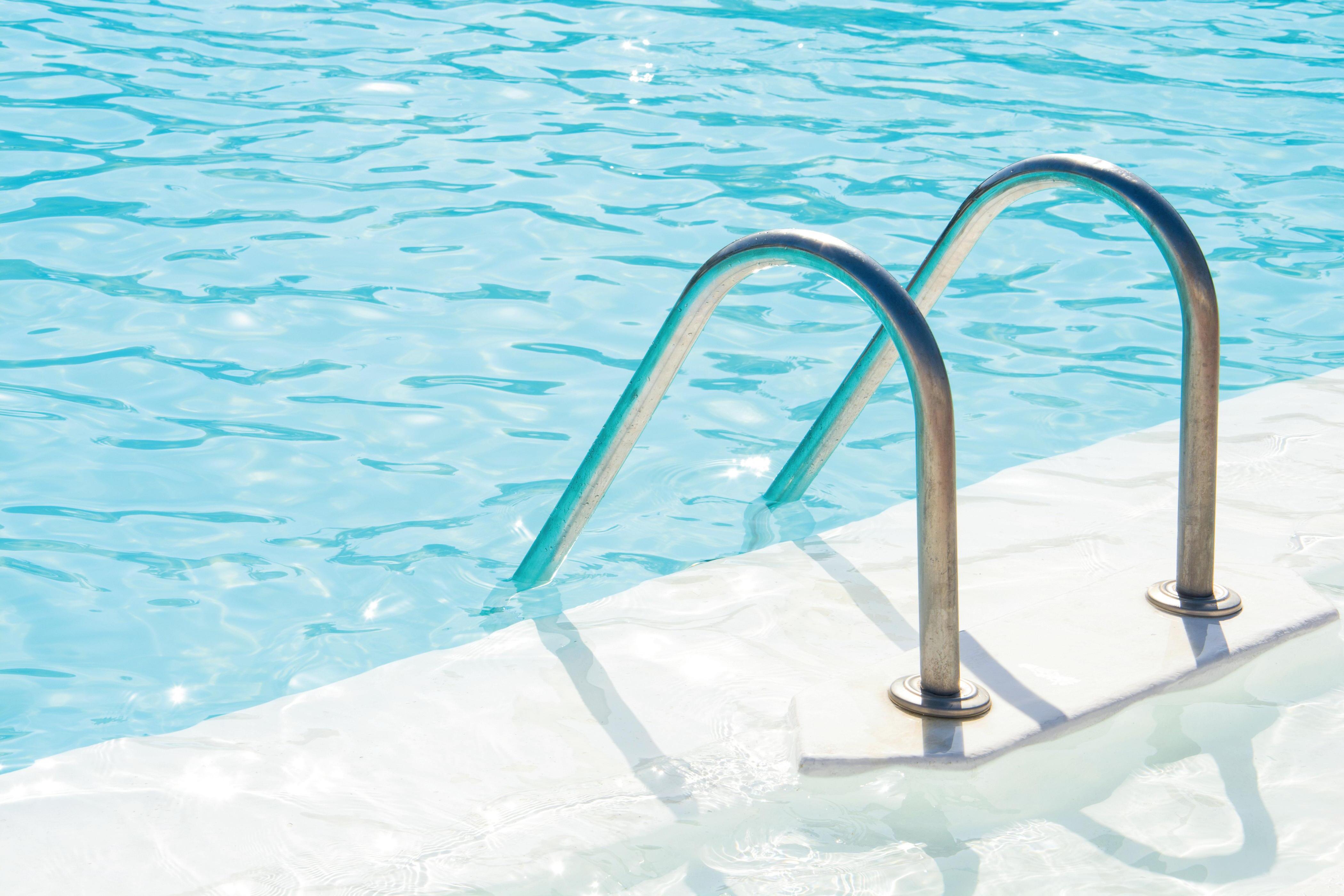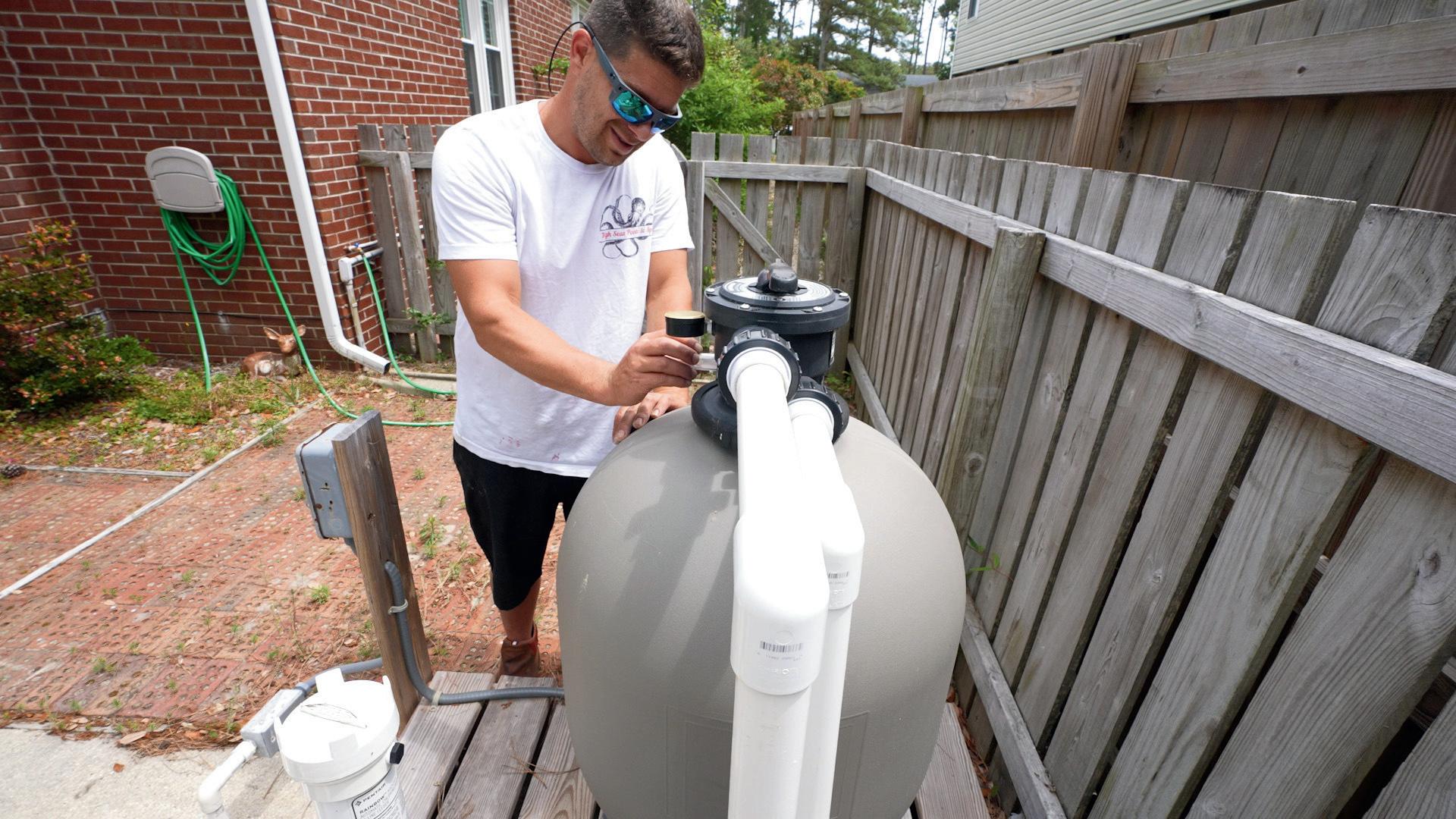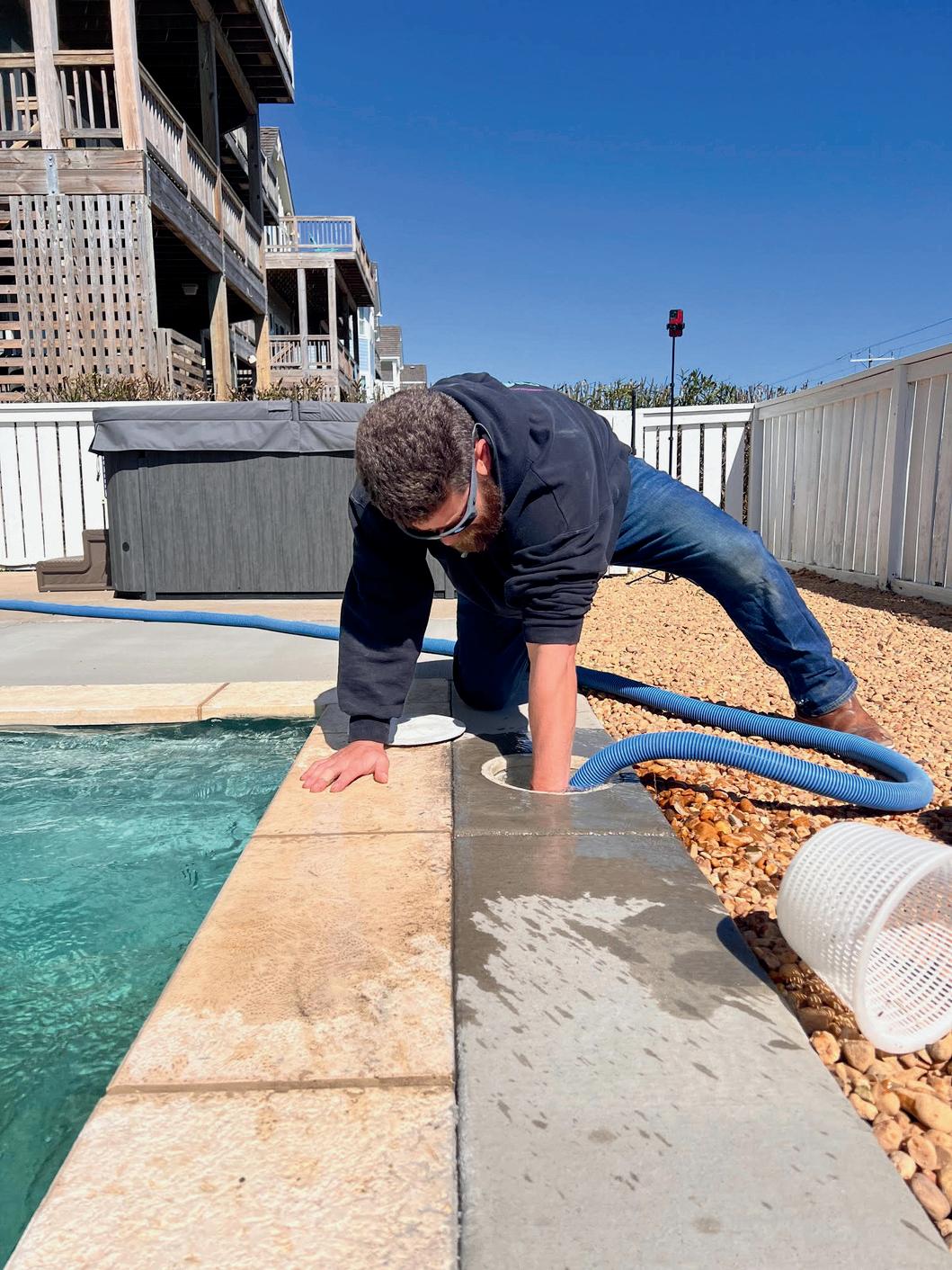fall home improvement



The meaning of the term
“cozy” varies as it pertains to home decor. For some, cozy may mean intimate spaces with lots of quilts and throws. For others, cozy could indicate bright and airy spaces enhanced by plenty of fresh foliage. Regardless of how they define cozy, homeowners typically want their homes to be inviting and comfortable. With that in mind, the following are some ways to impart a cozy vibe to any living space.
• Make use of a fireplace. Flames lapping wood (or faux wood in the event of gas-powered fireplaces) can put anyone in a tranquil state of mind.
Fireplaces add instant ambiance and make great places for people to congregate and engage in conversation. During warmer months when the fire isn’t blazing, decorative candles can be lit to mimic the same feel.
• Add texture in the design. Texture can be anything from a raised pattern on wallpaper to a knotty area rug to a mosaic piece of artwork. A home with texture tends to create cozier impressions than one with all sleek and smooth surfaces.
• Enjoy a soft rug. Although many design experts say hardwood floors or laminate options are easier for allergies and keeping a home clean, a soft rug
underfoot can be welcoming. Rather than wall-to-wall carpeting, place area rugs in spots that can use some cozying up, such as beneath beds and even under the dining table.
• Light candles. The warm, flickering light of candles adds cozy vibes in spades. According to The Spruce and Paula Boston, a visual merchandiser for Festive Lights, candles can be used throughout a home to create instant atmosphere. Exercise caution with candles and fully extinguish them before retiring for the evening.
• Update bedding for the season. Crisp and light cotton and linen are cozy materials when the weather is warm. But when
the temperature starts to dip, flannel or jersey bedding makes a bed that much more inviting, says Real Simple.
• Invest in lots of pillows. Pillows can instantly make a spot more cozy, whether it’s the living room sofa or an outdoor lounging nook. Look for materials that are durable for the space in which they’re being used.
• Think about warm lighting. The transition from incandescent light bulbs to halogen and LED is beneficial from an environmental standpoint. However, LEDs illuminate with a more stark, blue light that can seem clinical in home spaces. Look for bulbs where the
“temperature” can be customized. The more the color spectrum leans toward warm light, the more cozy a space will feel. This can be enhanced by putting some lights on dimmer switches, and toning down the brightness as needed.
• Install a bookshelf. Even for those who are strict devotees of e-readers, a shelf full of actual books interspersed with some well-placed knickknacks can make a room feel more cozy. Books add texture, the feel of hallowed halls and libraries, and visual appeal.
Making a home more cozy doesn’t have to be complicated. A few easy modifications can improve interior spaces.
Parents typically make certain changes around a home to ensure it’s accommodating to children. Childproofing is a necessity, but entire rooms also may be transformed with children’s enjoyment and well-being in mind.
It’s common for homeowners to set aside rooms for children to play and explore. These playrooms may initially feature infant swings and bouncers, and eventually start to accumulate the toys that kids receive on holidays and birthdays. Easels, building block sets, puzzles, video games, books and so much more fill these playrooms where young children spend the majority of their time engrossed
in imaginative play. But as children grow, playrooms may no longer be necessary. Homeowners can ensure these rooms evolve with the family, and here are a few ways to do just that. Make it a home theater/ gaming room
The National Institutes of Health says children between the ages of eight and 17 spend an average of 1.5 to 2 hours playing video games each day. It’s important for parents to monitor their children’s gaming, particularly when kids participate in social platform games that involve people with an internet connection chatting and working together. One way to do so
is to locate the gaming setup in a central location, like a home theater room.
Establish a hobby space
Trade in kids’ toys for “toys” that everyone in the family will enjoy. Turn the room into one where family members can explore their passions. This may include scrapbooking, painting, yarn crafts, collecting, photography and more.
Create a quiet learning spot
As children grow up, they may need to spend more time studying. Transforming a playroom into a library or a study space can provide that out-of-the-way
spot to get homework and studying done. Adults in the home also can use it for reading, paying the bills or any other task that requires concentration and quiet.
Build a home gym
If the space is large enough, bring in some workout equipment and make the play space one that encourages exercise and fitness. You may not even need large equipment and can utilize interlocking foam tiles that already may be in the playroom. With some free weights, resistance bands and even your own body weight, you can perform a number of beneficial exercises.
Expand your living space
If the playroom currently abuts another room that can use some more real estate but is separated by a wall, take down the wall to increase the square footage.
Set it aside for guests
Clean out the toys and bring in a bed and nightstand. Now you’ll have a dedicated spot for overnight guests to stay, or a room that visiting older children (and eventually grandchildren) can call their own. Playrooms are much-used areas when children are young. These rooms can evolve as kids get older and families’ needs change.

enovations that make homeowners and residents of a home happy are always worth the investment. Though it’s certainly true that projects that create more functional, usable space and add comfort and convenience are worth the price, such renovations are even more beneficial if they provide a good return on homeowners’ financial investment. Returns are often cashed in when homeowners put their homes up for sale, and each year Remodeling magazine releases its “Cost vs. Value Report,” which considers a wealth of data across the United States to determine which renovations return the highest percentage of homeowners’ financial investment. According
Hto the “2024 Cost vs. Value Report,” the following are five projects that provide a strong return on investment (ROI).
1. Garage door replacement: The average job cost for this project is slightly more than $4,500 but the project is valued at $8,751, providing an especially high 194 percent ROI.
2. Steel door replacement: Remodeling magazine notes that a steel entry door replacement is worth double what it was worth in 2023. This project offers a 188 percent ROI on an average investment of $2,355.
3. Manufactured stone veneer: A manufactured stone veneer is a man-made product that appears as if it’s natural stone. Many homeowners prefer manufactured
stone veneer to natural stone because of the price, as the former is less expensive and easier to install, which means lower labor costs as well. The comparatively low cost of manufactured stone veneer is perhaps one reason why it averages a roughly 153 percent ROI on an average cost of just more than $11,000.
4. Grand entrance upscale (fiberglass): Few things are as awe-inspiring as an impressive entryway, and upgrading to a grand fiberglass entrance door provides a 97 percent ROI. Components of these entryways can vary, but Remodeling magazine notes the project may entail removing an existing entry door and cutting and reframing the opening for a larger with dual sidelights.
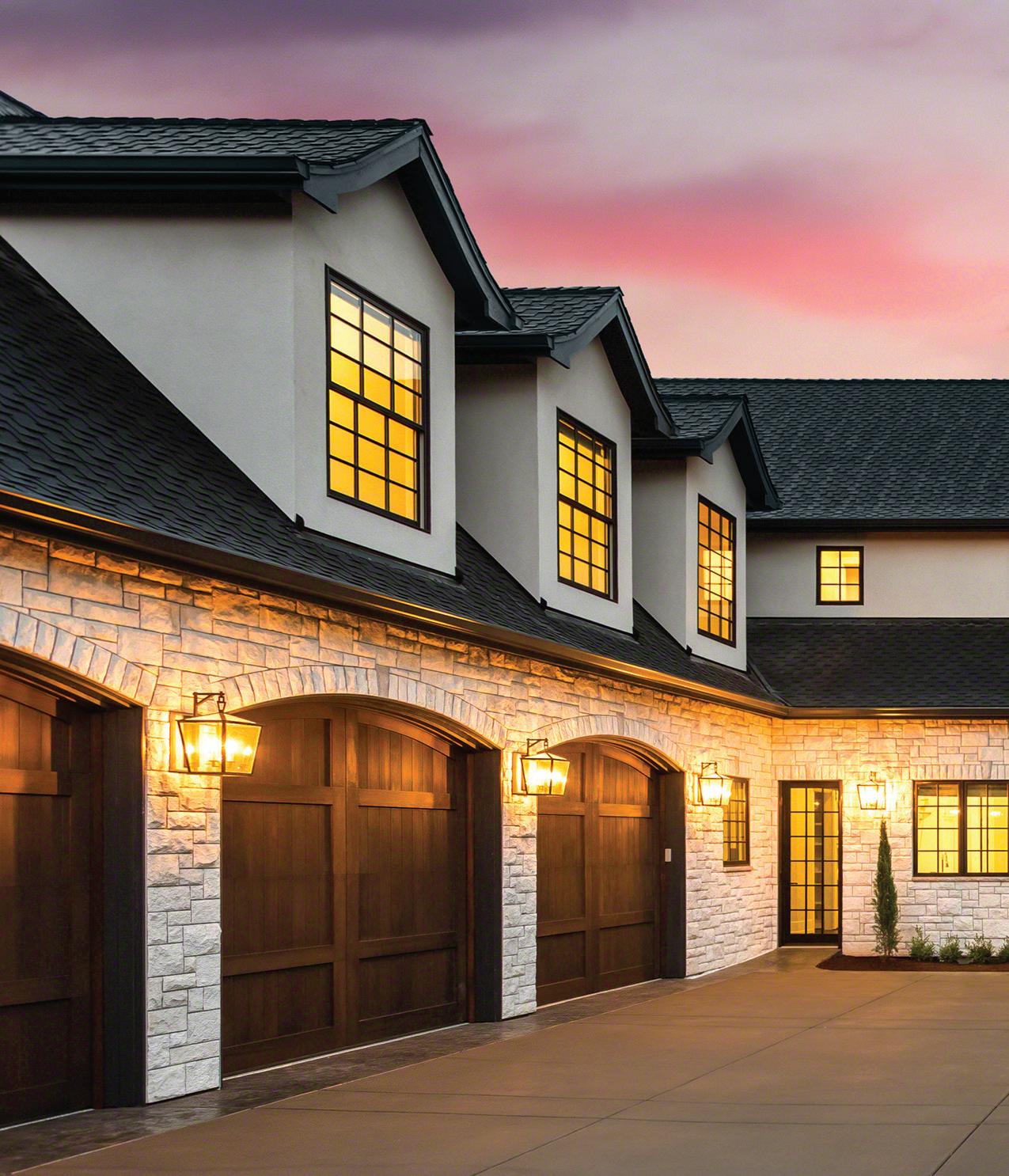
Home Study” from Houzz Research, kitchens were the most popular
rooms to renovate in 2023. There’s no denying the appeal of a newly renovated kitchen, and homeowners considering such a project may be happy to learn that a minor kitchen remodel that costs an average of around $27,000 provides a 96 percent ROI. Bankrate.com notes that minor kitchen remodels typically keep the current kitchen design, size and layout intact, but these projects may involve painting walls, refreshing backsplash, replacing lighting and plumbing fixtures, and changing cabinet hardware and facades. Home renovations that provide a significant ROI can make homeowners happy once a project is completed and even happier when the day comes to put a home up for sale.
omeowners are spending big bucks on home renovations. According to the Joint Center for Housing Studies at Harvard University, home improvement project spending continues to increase. It’s predicted to go from $472 billion spent in 2022 to $485 billion in 2024. Those targeting a specific home renovation likely know there is much that goes into the process from start to finish. Patience is a requisite virtue with any remodel, as even a thoroughly conceptualized plan can encounter a few bumps along the way. Although there is no way to completely remove renovation-related

obstacles, there are ways to make projects go more smoothly.
• Establish a clear plan from the beginning. Now is not the time to be on the fence about details. A vision for the renovation
is essential, and should include details about layout, materials, colors and design.
• Manage your expectations. Again, this speaks to a need for patience with a project but also involves
flexibility. Being too rigid when choosing materials can require waiting for back-ordered supplies to come in. Wanting contractors to bend to your schedule can delay the project even further. Creativity and flexibility are key.
• Establish a budget. It can be easy to spend beyond one’s means, especially when issues crop up. Black House Real Estate stresses the importance of creating a budget before starting a renovation, which may involve working with a local professional to help. Houzz advises preparing for worstcase scenarios by adding anywhere from 1 percent to 20 percent to the budget. Commit to sticking to the budget no matter what
comes down the pike.
• Assemble a good team. Thoroughly research all contractors who will be involved with the renovation. These include designers, architects, builders and more. Be sure they come highly recommended and research online reviews. A good team removes some stress from the project because you’ll know the work is in experienced hands.
• Prepare the space for the remodel. Any work you can do will help save on labor costs and make it easier for the team to get started on the project. Clear out clutter and personal items. Ask if it would be helpful for you to handle some demolition, whether that’s pulling up
old tile, removing drywall or another task.
• Have an escape hatch at the ready. Home renovations can cause upheaval to daily life, and that can mean stress on top of already chaotic schedules. If money and situation allow, plan a getaway during a particularly tough stretch of the project so the noise, mess and disruptions will not induce headaches. Consider spending a few nights at a hotel or a friend or relative’s house to escape the constant grind of the project. Home renovation projects add value and functionality to homes. Such undertakings can go more smoothly with some sound planning.



SUNDAY, SEPTEMBER 29, 2024
Home is where the heart is. That sentiment may be especially true for seniors who have spent decades living in their homes. A lot of hard work goes into home ownership, and seniors who have lived in the same space for a while undoubtedly have countless memories within the walls of their homes.
A lifetime of experiences in a home can make it hard to leave, but many seniors experience diminished mobility as they age. Mobility issues can make it hard for seniors to traverse their homes, but aging homeowners can make various renovations to make a home more accessible.
• Revamp entryways and staircases. A 2020 study of 1,000 adults in the United Kingdom found that 28 percent of individuals age 65 and older who don’t exercise regularly struggle with activities like walking up stairs. The study, commissioned by Total Fitness, also found that 14 percent of men and women over 65 who regularly engage in moderate exercise still find it challenging to climb up and down a flight of stairs. Seniors facing similar challenges can install a ramp at their home’s entryway so they can comfortably go in and out.
Even with the best intentions and services of qualified contractors and crews, timelines for home renovation projects can be prolonged due to various circumstances. Each project is unique and contractors cannot predict the circumstances they will encounter once work is started. Various factors can affect the overall timeline of a project.
• Weather can impact the
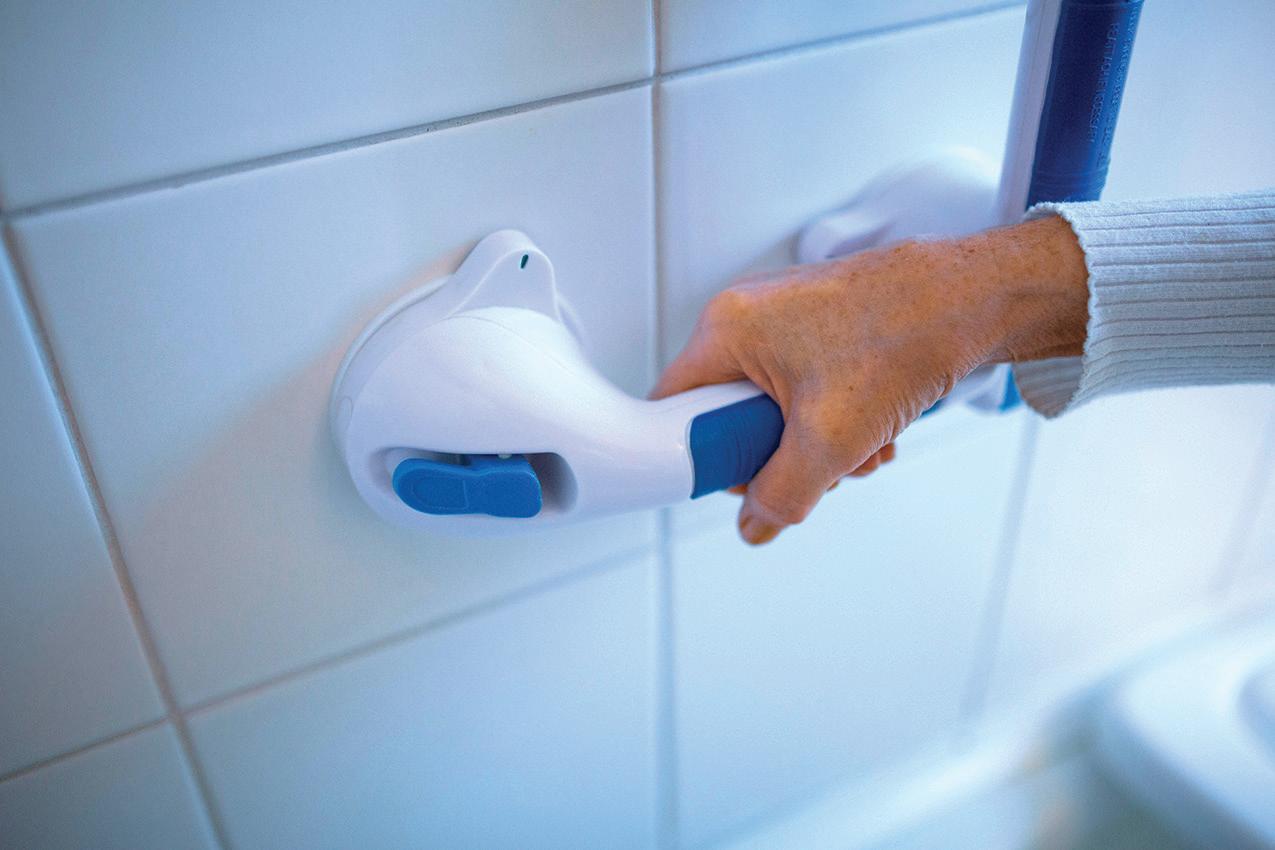
Inside, a chair lift can ensure seniors are not struggling to move from one floor to another.
• Raise the outlets throughout the home. They’re easily overlooked, but outlets, particularly those outside the kitchen, tend to be close to the floor.
AARP notes that’s no accident, as outlets are generally placed at a height equal to the length
of a hammer to save time with measuring when buildings are being constructed. Outlets close to the floor can be difficult for seniors with mobility issues to reach. Relocating the outlets a little higher off the floor is not an expensive renovation, but it can make a home more accessible for seniors who have difficulty bending down or getting down on one knee.
• Install door knob extensions. Verywell Health notes that nearly half of all people age 65 and older have arthritis or another rheumatic condition. Arthritis can make it difficult for seniors to grip and turn door knobs. Door knob extensions can make it easier for seniors with arthritis to open the
ability to pour foundations, do housing framing, install Belgium block pavers, or tend to roofing projects.
• The temperature outdoors and inside can affect paint drying times or how long it takes asphalt to cure.
• Getting a permit for work isn’t always cut and dry. There may be delays at the permit office that can affect the remodeling process. Also, inspectors
have to check that work is being done correctly, and contractors can be at the mercy of inspectors’ schedules.
• Mold, water damage, insect infestation and other issues may only become apparent once demolition begins. These issues often cannot be ignored and must be addressed before work on the actual remodel can continue.
• Changes in design after an initial plan has been established
can throw off the timeline, as it may require ordering new supplies or getting new architectural drawings.
• Supply chain issues became commonplace during the global pandemic, and building materials still may be affected. A project can be delayed by certain materials being backordered or no longer available.
• Some homeowners have to interview and hire new
doors in their homes. Such extensions are roughly five-inch levers that can be installed over an existing door knob, making it easier to grab and pull down. Extensions save seniors the hassle of turning the knob, which some may find painful and almost impossible.
• Renovate the bathroom. Bathroom renovation projects can be costly, but seniors with mobility issues should know that bathrooms can pose a particularly dangerous threat. The Centers for Disease Control and Prevention notes that roughly three million older adults are treated for fall injuries in emergency departments each year. A 2019 analysis published in The Journals of Gerontology noted that 22 percent of in-home falls resulted in a change in the person’s walking ability. Replacing a step-over shower with a zero-step alternative can make it easier for seniors with mobility issues to get in and out of the shower, thus reducing their risk for falls. Grab bars along shower walls and a chair inside the shower can make it easier to bathe and towel off safely.
Seniors with mobility issues can make their homes more accommodating through an assortment of simple, yet effective renovations.
contractors if theirs fails to deliver on promises or is a no-show altogether.
• Homeowners whose loans or other funding fall through may have to delay further work until they are able to pay for the work at hand.
These are a few situations that can waylay a home renovation project. Individuals need to remain patient whenever they begin a remodeling project.

By Lee Ann Capogrossi for Action Plumbing
t’s no secret that wipes have become an essential item in many households. They’re marketed as a convenient tool for cleaning and personal hygiene, often labeled “flushable” to suggest easy disposal. But the reality is much more complicated – and costly. As plumbers who serve the Outer Banks community, we’ve seen firsthand the damage wipes can cause to plumbing systems.
The “flushable” myth
The term “flushable” is a major source of confusion. Many consumers assume that if a product says it can be flushed, it must be safe for their plumbing. However, this is not necessarily the case. Most wipes don’t break down in water the same way toilet paper does. Once flushed, they remain largely intact, posing a significant risk to your plumbing and even the wider sewage system.
Unlike toilet paper, which disintegrates shortly after flushing, wipes are designed to be durable. While this might make them ideal for cleaning, it’s disastrous for your pipes. Once they’re flushed, wipes can build up in your plumbing, leading to stubborn clogs that can damage your home’s plumbing system.
Why wipes cause major issues
The problem doesn’t end with your home’s plumbing. Even if wipes make it through your pipes, they can cause significant issues at wastewater treatment plants. These facilities are designed to handle biological waste and toilet paper, not the tough, synthetic fibers found in wipes. As a result, wipes can contribute to equipment failures, increase treatment costs, and even lead to environmental problems when they aren’t properly filtered out. In septic systems, the situation can be even worse. The wipes don’t break down, meaning they sit in the tank, slowly accumulating and reducing the efficiency of the system. Over time, this could lead to expensive repairs.
“As a plumber with over 20 years of experience in the Outer Banks, I’ve lost count of how many times I’ve had to clear out clogs caused by wipes,” says John Osborn, owner of Action Plumbing. “It’s frustrating because most people don’t realize they’re causing a problem until it’s too late. If I could give just one piece of advice, it would be this: Don’t trust the ‘flushable’ label. It’s better to be safe than sorry when it comes to your pipes.”
When wipes enter your plumbing, they often don’t make it very far before becoming stuck. Over time, they can accumulate, attracting other debris, such as hair, grease and soap scum. This leads to slow drainage at best and total blockages at worst. The result? Expensive emergency plumbing calls that could have been avoided by simply throwing wipes in the trash.
Beyond clogs, flushing wipes may cause damage to your plumbing pipes that go beyond simple drain cleaning. This includes damage to pipes and leaks that can damage walls, flooring, cabinetry and more.
Wipes in commercial and public plumbing
Homes aren’t the only places where wipes wreak havoc. Public restrooms, hotels and businesses are often the victims of wipes being flushed. Commercial plumbing systems may be designed to handle more volume, but they aren’t immune to clogs. For business owners, this can mean disruption to their business while repairs are made.
In public restrooms, where wipes are more likely to be flushed in larger numbers, municipalities face increased maintenance and repair costs. This impacts everyone, as taxpayer dollars are often used to fix problems that could have been avoided.
Another significant issue with wipes is their environmental impact. Many of these products are made from synthetic
materials, meaning they don’t break down naturally in the environment. When wipes aren’t properly filtered out at wastewater treatment plants, they can end up in waterways, where they pose a threat to wildlife.
Microplastics, which are increasingly recognized as a major environmental hazard, can also form when wipes degrade over time. These tiny plastic particles can enter the food chain, harming marine life and even making their way back to human consumption through seafood.
The better alternative
The simplest solution to avoid these problems is to stop flushing wipes entirely. Even products labeled “flushable” should be disposed of in the trash. There are also more eco-friendly alternatives on the market, such as biodegradable wipes. While these still shouldn’t be flushed, they do break down more easily in a landfill, reducing their environmental impact.
Another option is to use reusable cleaning cloths for household chores. These can be washed and reused multiple times, cutting down on both waste and the likelihood of clogs in your plumbing.
Protect your pipes
In the Outer Banks, many homes have septic systems or older plumbing infrastructure that is especially vulnerable to wipes. If you own a rental property or vacation home, it’s a good idea to leave clear instructions for guests to avoid flushing wipes. Post a sign in the bathroom reminding visitors to use the trash bin for wipes and other products.
John adds, “Education is key. It’s a small step that can save thousands of dollars in repairs.”
Final thoughts
Wipes may seem like a small convenience, but they come with a big downside. Whether you’re at home or managing a rental property, flushing wipes can lead to serious plumbing problems. By disposing of wipes properly and educating others about their dangers, you can help protect your pipes, your Outer Banks home, and the environment.

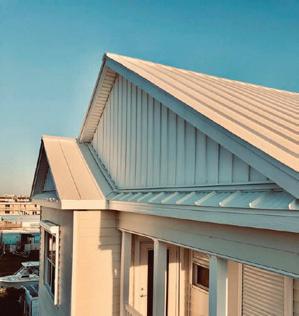
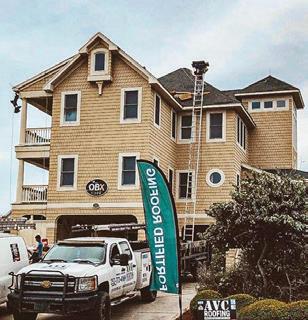
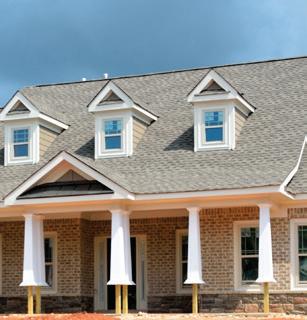
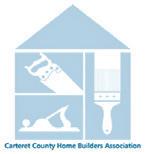

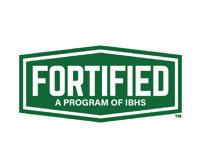


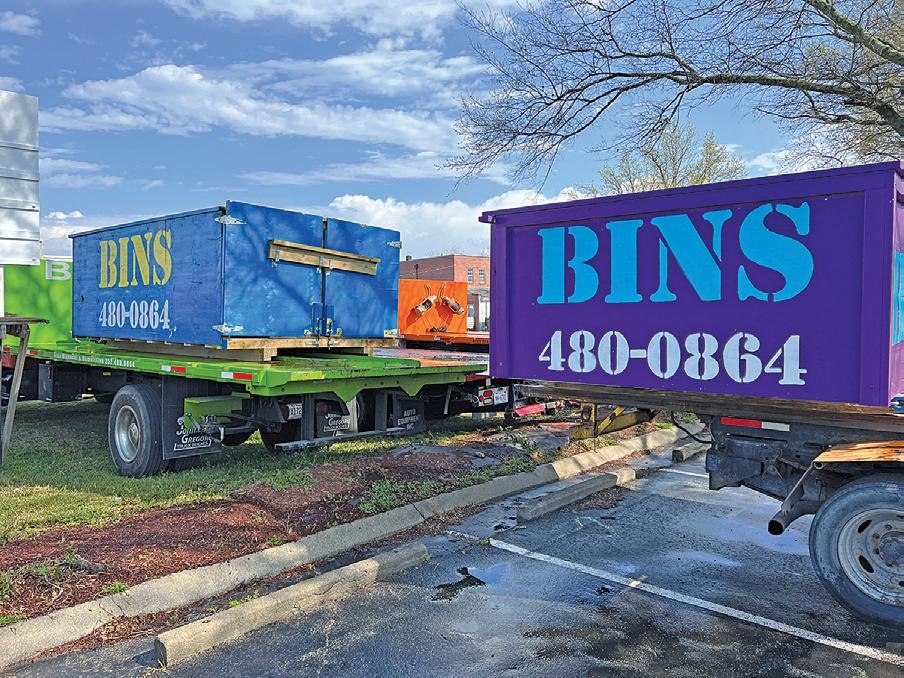
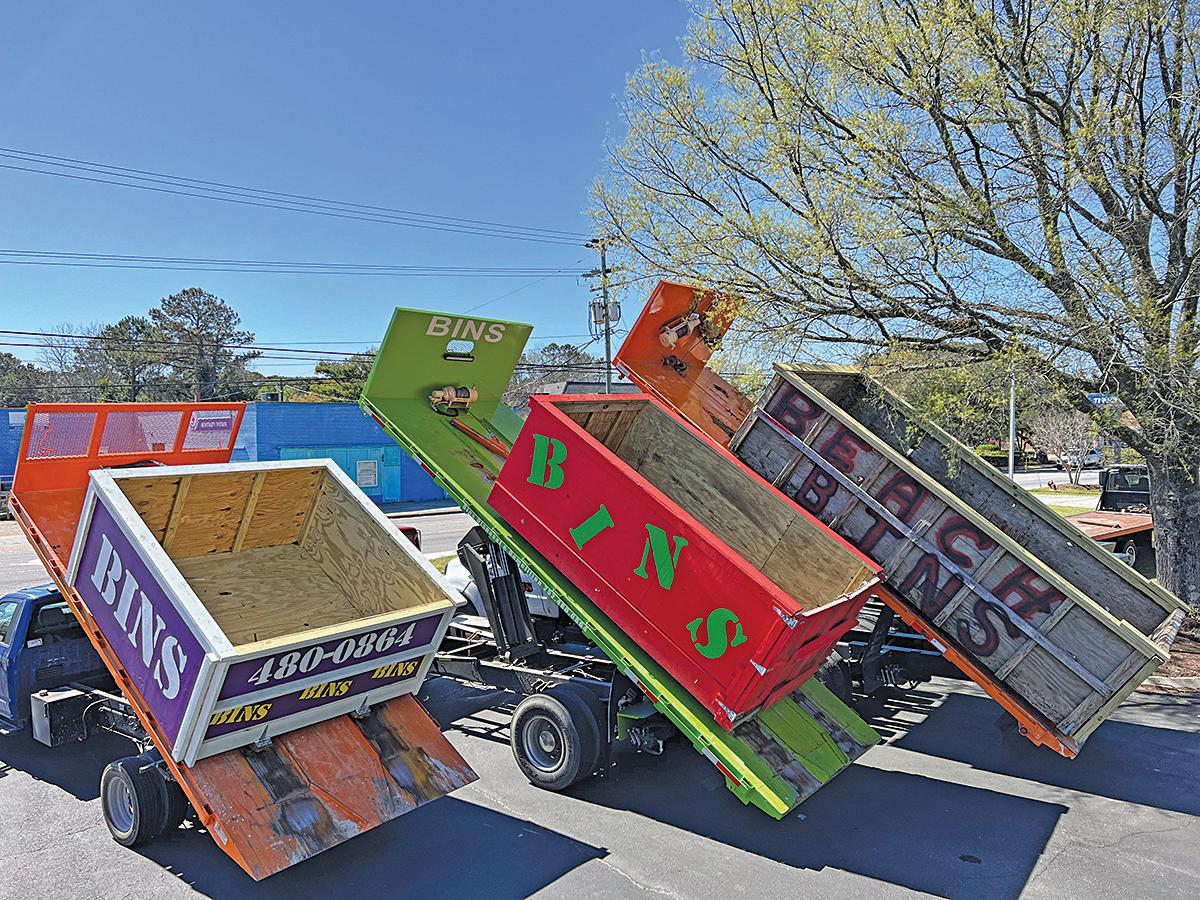
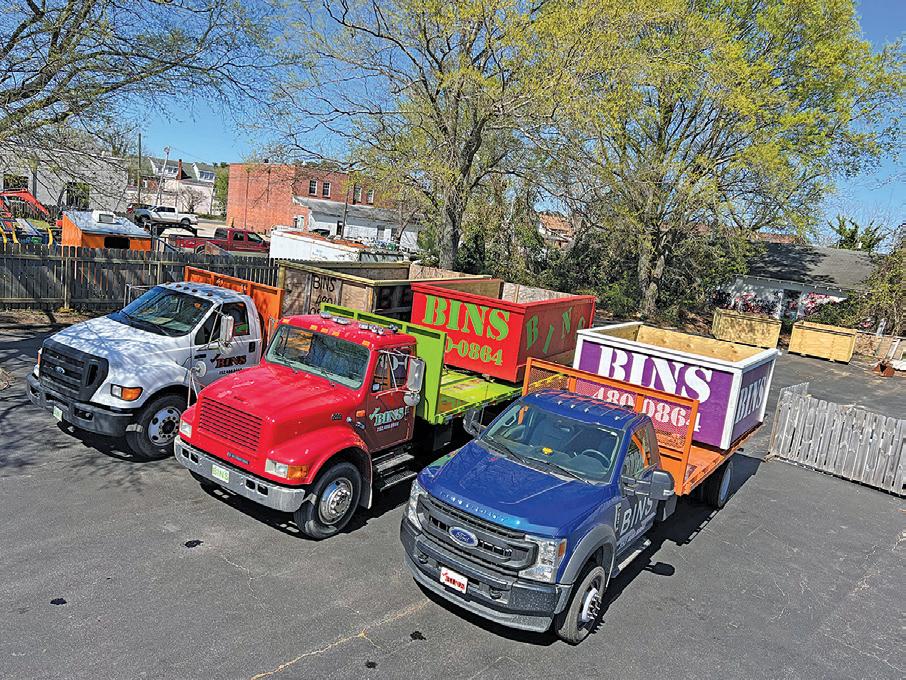
Raking has long been part of our autumn rituals. But leaves actually play a vital role in maintaining the balance of the ecosystem around us. Here’s why leaving those leaves alone is the best idea, with tips on how to use them instead.
Providing shelter Leaves serve as shelter for insects during the fall and winter seasons, including butterflies and other pollinators that keep our flowers and food supply vibrant and strong. By leaving the leaves in flowerbeds and other areas away from the grass, you can provide a safe haven for these very beneficial insects. As they flourish, you’ll also be ensuring the health of green and growing things everywhere. Move leaves from grassy areas into beds and garden areas. They will serve
Planning plays an integral role in the home improvement process, and it’s perhaps a more time-consuming component of renovations than homeowners realize. According to the “2024 U.S. Houzz & Home Study” from Houzz Research, homeowners spent almost twice as much time planning their kitchen renovations in 2023 as it took for the projects to be completed. The researchers behind the report found that the average time spent planning a kitchen renovation in 2023 was 9.6 months, while the building took 5.1 months.
as insulation during the colder winter season. You can mulch it all to provide additional nourishment for your lawn.
Mulching option
Instead of simply removing leaves by raking or blowing them away, consider turning them into mulch to create a natural fertilizer. Most people simply run a lawnmower over them, breaking down leaves into smaller pieces. That prevents your grass from dying in the dark. It allows leaves to more quickly decompose, enriching the soil with valuable nutrients.
Some lawnmowers come with a built-in mulch setting, or you can purchase a mulching kit to attach to the mower. They’re typically used on the highest setting of the mower, but follow suggested manufacturer guidelines when using these kits. In the case
of taller drifts of leaves, it may be necessary to make multiple passes. You can more evenly distribute mulched debris by raking it across the yard.
Other uses
Leaves can suffocate your lawn, creating dead patches of grass.
Remember that the next time you have weeds. Cover them with leaves as an aid in eliminating weeds during the autumn and winter months, while avoiding pesticides altogether. If you have large bare areas on your property, leaves or mulch can help prevent weeds from taking root.
Another option for dealing with leaves is to relocate them to a designated area in your yard for composting. If your accumulation of leaves is so large that it doesn’t decompose by spring, simply transfer it all to the compost bin.

Additional projects featured a similar disparity between the time to plan and the time to build. For example, homeowners spent 8.1 months planning living room renovations, which then took an
additional 4.1 months to complete. Even smaller projects like closet ren ovations required ample planning (6.5 months) that more than doubled the time required to complete the project (3.1 months).



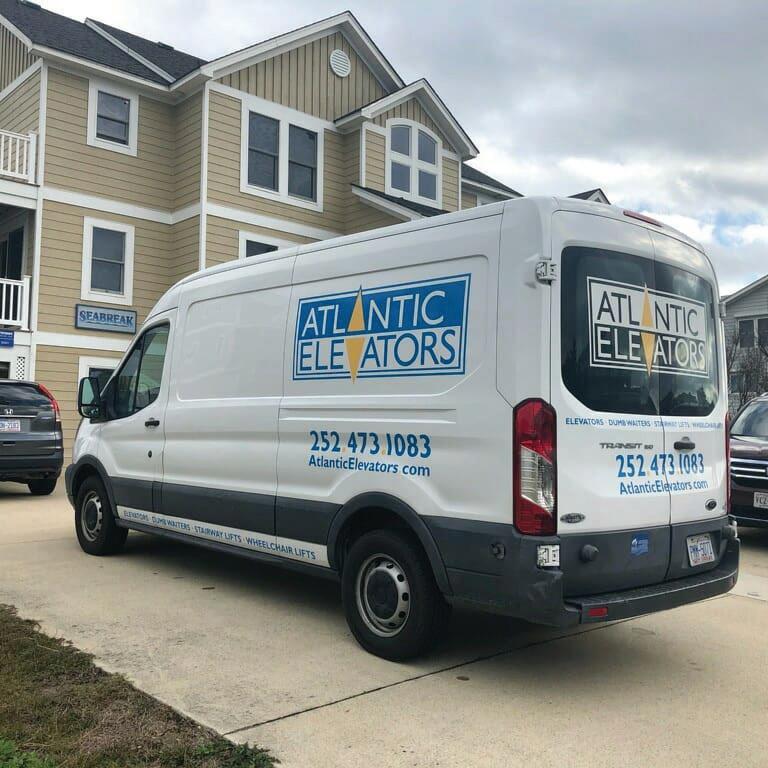


inter brings its own special stresses to a roof. Extreme amounts of moisture, freezing and thawing cycles, and the weight of snow itself can put an unmanageable amount of stress on aging structures. That’s why fall is such a smart time to repair or perhaps even totally replace your roof, as recommended. Begin with a thorough inspection.
Getting an inspection
The American Society of Home Inspectors recommends getting a professional roof inspection twice a year. You can perform your own spot checks in the meantime. Look for any cracked or curling
shingles on the outside, while noting stains or damp areas in the attic. Address these issues before the coldest months since they may become more challenging and costly to fix in the wintertime. During a professional inspection, experts will thoroughly examine your roof from the exterior and interior of your home. They’ll assess the condition of the shingles, paying close attention to any ice dams. The inspector will evaluate the overall state of the chimney, if you have one. Once inside, they’ll look for signs of moisture, mold and ventilation problems, while evaluating the insulation.
Making repairs
ummer can be hard on the exteriors of our homes. If you’re ready for deep cleaning, pressure washing is the easiest and most thorough option. It can give you a clean slate if you’re considering any touchups. Still, safety can be a concern with these powerful machines. Here’s a checklist to consider before you pressure wash.
Electrical dangers
Washers with over 100 pounds per square inch of pressure can be extremely dangerous, potentially causing severe injuries. Test the groundfault circuit interrupter before using the machine. Pressure washers must be plugged into a properly grounded receptacle.
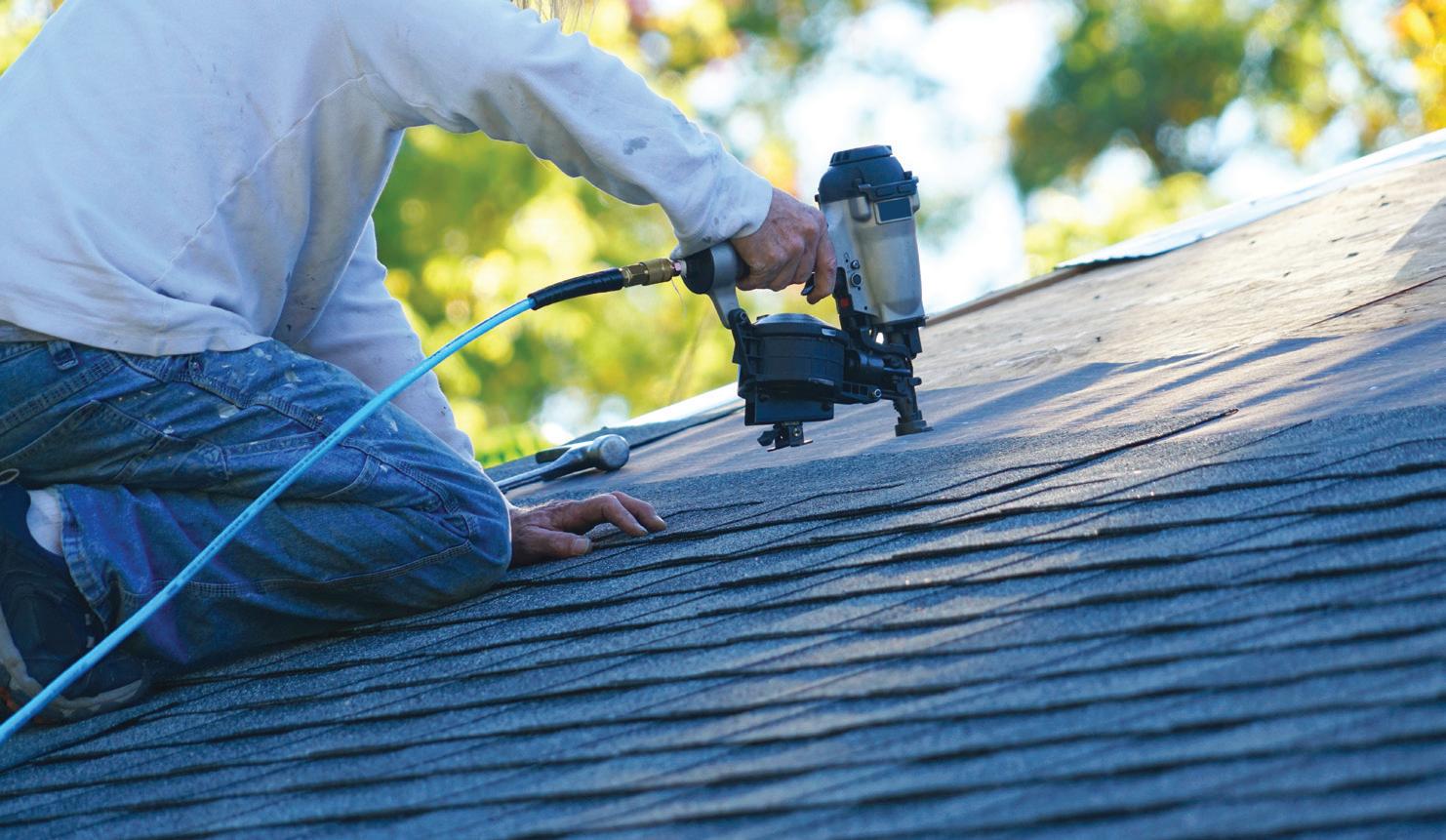
so issues
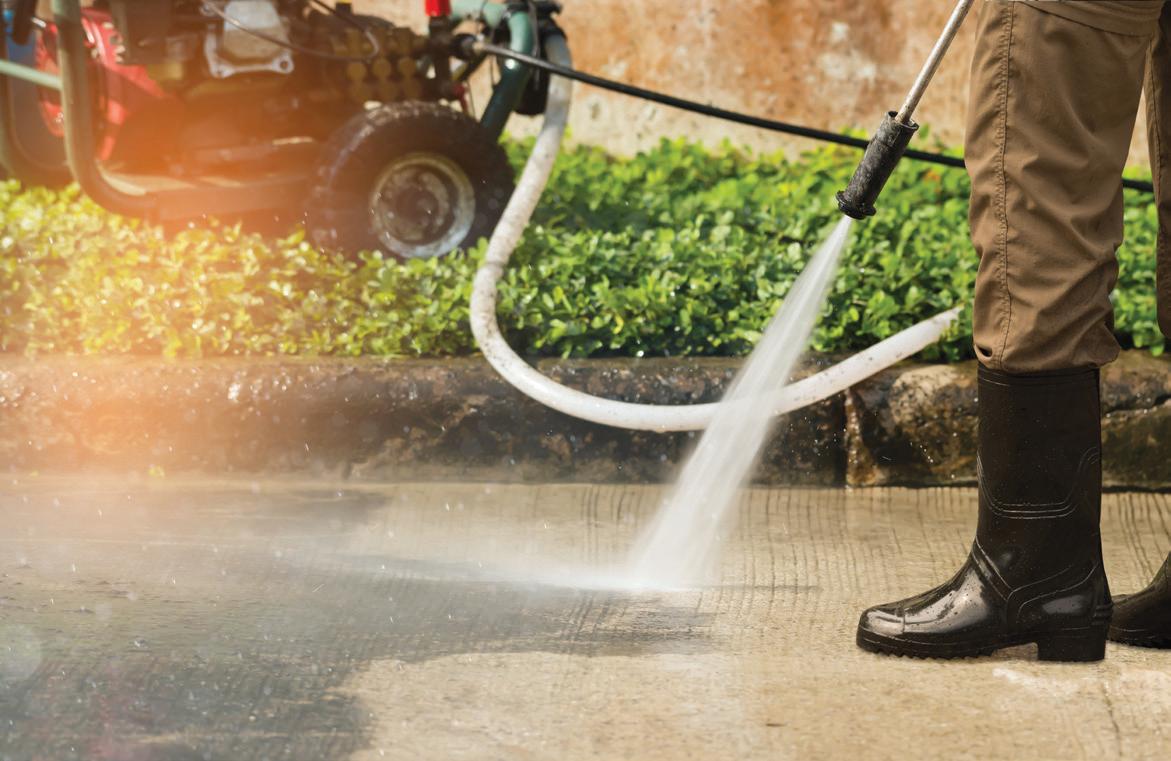
Never remove the third prong from the power cord. This is designed to protect you by providing proper grounding. Wear rubber-soled shoes that provide insulation. This will
protect you from any potential electrical shocks. If you must use an extension cord, make sure the connection is kept away from standing water. Always use a heavy-duty
extension cord that is specifi-
cally rated for use in wet locations. Never attempt to splice or cut the machine’s power cord or any extension cords. This poses a serious risk since it can lead to electrical malfunctions. Those who have gasoline-powered washers should avoid air intakes and enclosed spaces, since the exhaust can be toxic.
The Centers for Disease Control and Prevention reminds users to refer to the safety instructions in their owner’s manual. In general, avoid pointing the pressure washer at yourself or others. Be cautious with the high-pressure spray since it can move objects around, potentially causing harm to bystanders or yourself. Never allow
Know the risks
The inspector will draft a comprehensive report detailing any identified issues, their level of urgency, and a proposed course of action. If you live in a region with lots of winter precipitation, they’ll note that your roof may be susceptible to collapse due to the sheer weight of snow. Even a well-maintained roof can only withstand approximately 20 pounds of snow per square foot, according to insurance experts. That’s why regular fall inspections are so crucial. In some instances, snow removal may even be necessary during the winter season. Talk to an expert today to find out more.
children to operate a pressure washer, and keep them away while the equipment is in use. Many operator errors happen in situations where there is a lack of adult supervision.
In case of accident
If you injure yourself with a pressure washer, remember that even seemingly small wounds can be more serious than they might appear at first. For more manageable mishaps, it’s recommended to wash the wound thoroughly with soap and clean water, removing any dirt or debris. This will help prevent potential infection. Cover the wound with a bandage or clean cloth to protect against contamination. Otherwise, seek immediate medical treatment, as needed.



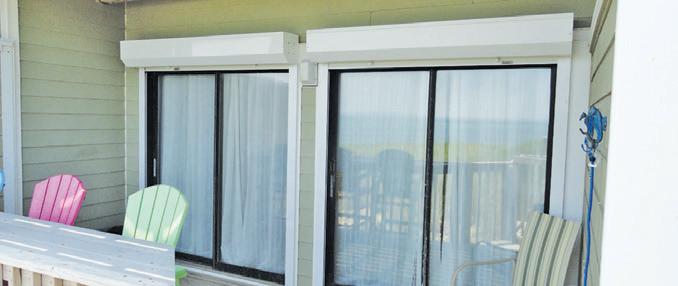
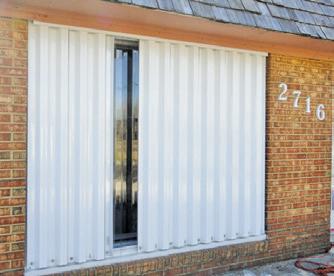
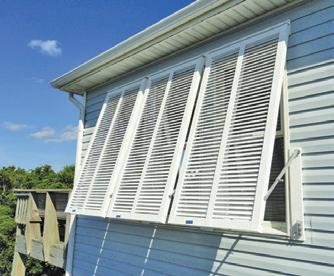



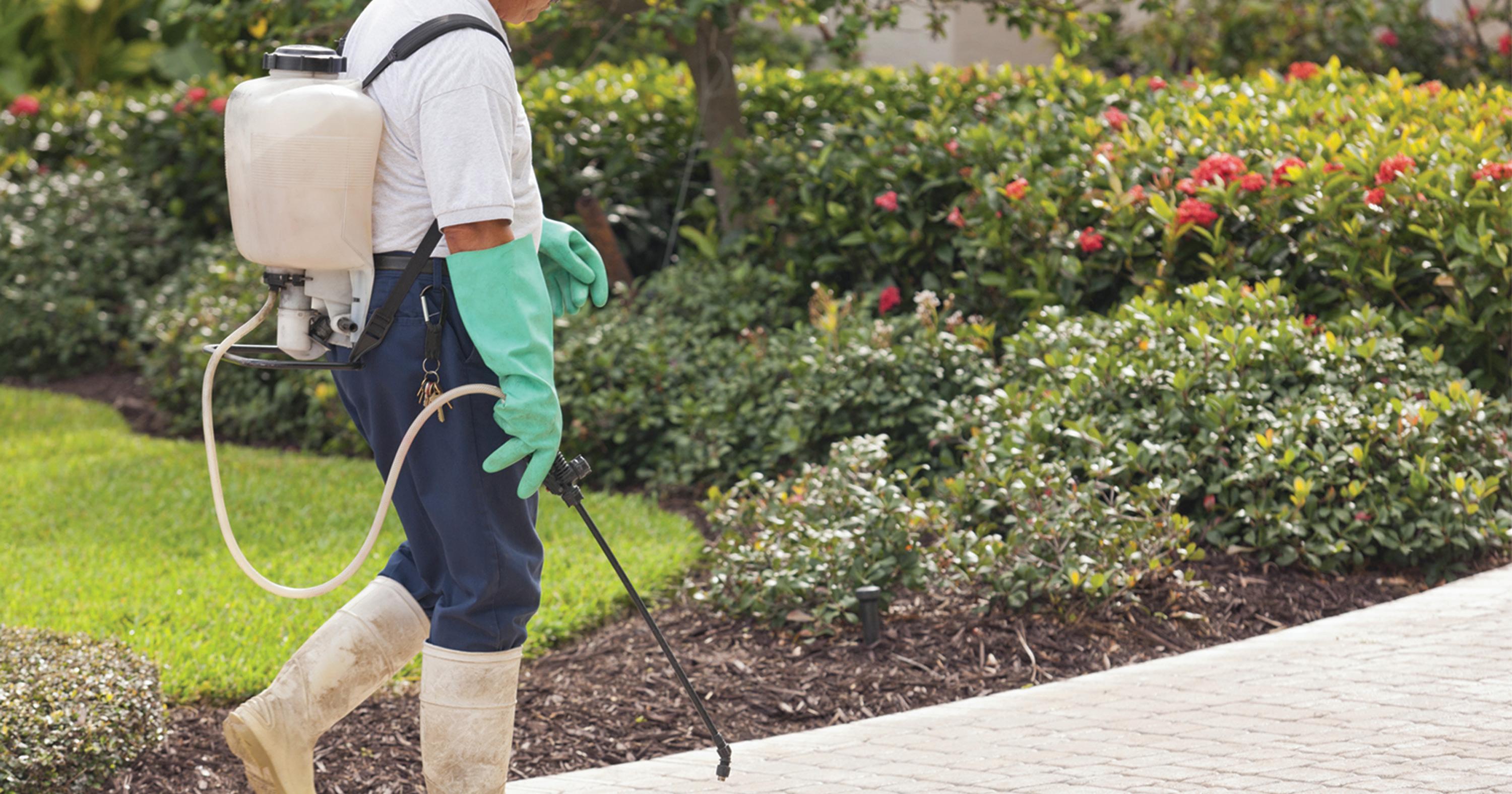

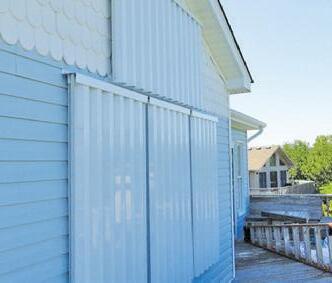
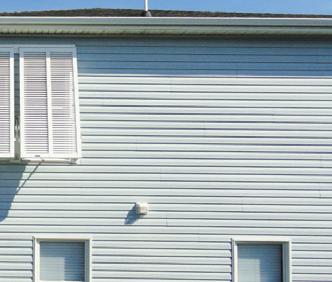
It gets far fewer mentions, but fall cleaning is every bit as important as the kind done each spring. Summer is for outdoor activity, and that inevitably leads to tracked-in dirt, mud and sand. Opened windows invite dust and other airborne particulates. At the same time, the looming cold usually harkens to a more settled time, with more time spent indoors. That’s why it’s best to take advantage of the autumn months to get your home in its best shape for winter.
Getting started
To begin your fall cleaning regimen, focus on decluttering your home and getting rid of items that you no longer need. Sort belongings into categories including things to be stored, donated, recycled, repaired or disposed of. Take the opportunity to organize your storage
space and maximize its efficiency. The easiest way to approach things is to follow the so-called “20-20 decluttering rule”: If you can replace any item for less than $20 in 20 minutes, it’s time to get rid of it.
Deep cleaning
Once things are downsized and organized, you’re ready to deep clean. Create a list of tasks that you would like to tackle, focusing on things that aren’t part of your regular cleaning routine. Key areas to work on include carpets and baseboards, kitchen cabinets and walls. Set aside time to wash your windows inside and out, including the casings and sills. Move furniture and beds so you can better sweep or vacuum underneath.
Regular maintenance
Before it gets cold, replace filters and check
your heating system to ensure everything is properly functioning. Schedule an appointment with a professional if concerns arise. Inspect and sweep chimneys if you have wood-burning fireplaces. Check all your batteries, especially those in carbon monoxide detectors, weather radios and smoke detectors.
Outside tasks
Clean gutters prevent water damage, a key concern during winter storms. If you inspect and repair them yourself, follow recommended safety procedures including having a work partner. Clean and put away any outdoor furniture that won’t be in regular use. Drain and then store your garden hoses. Check all weather stripping and caulking around windows and doors. Power wash any decking to prevent the growth of mildew and mold.
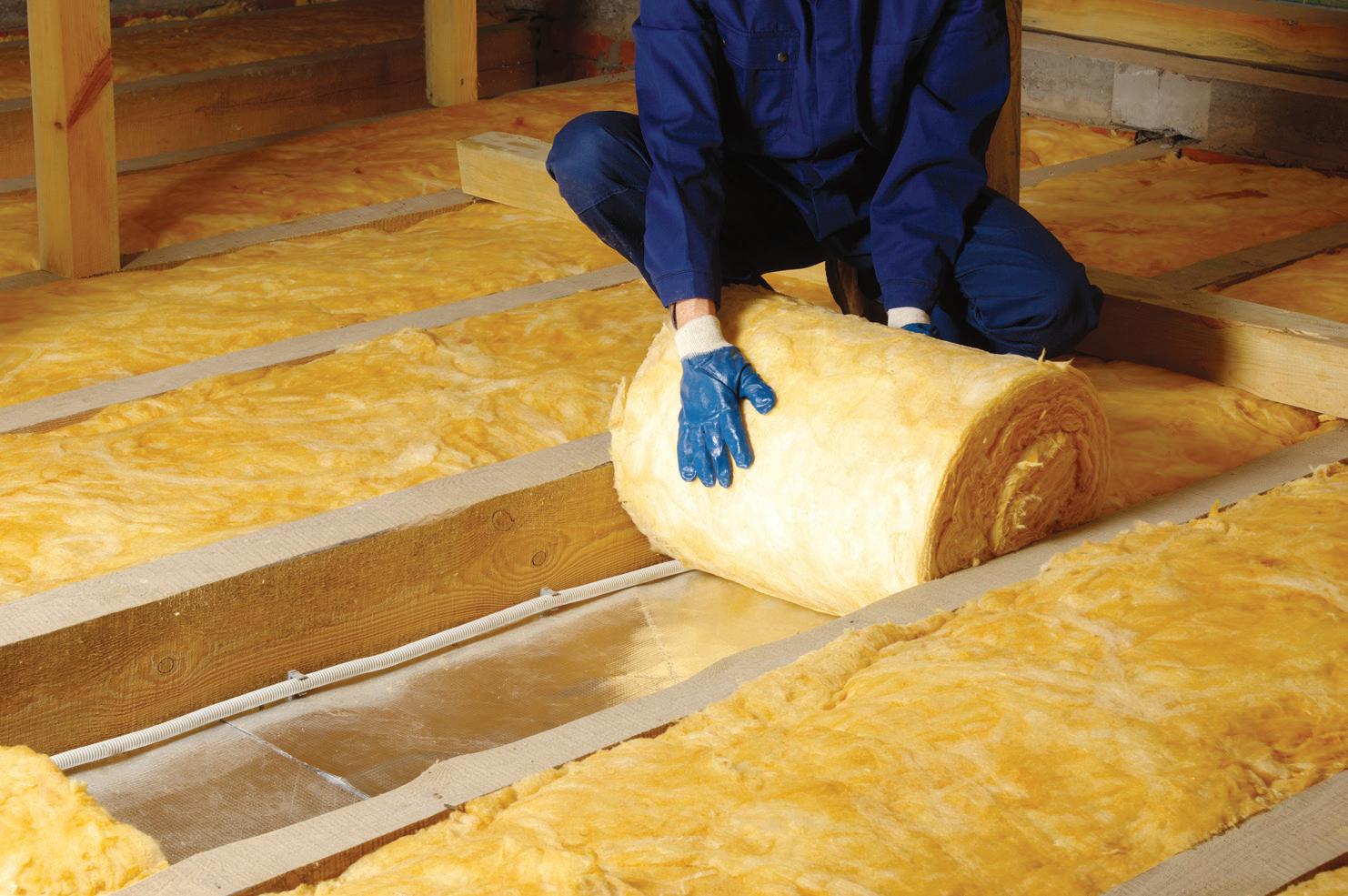
Dropping temps are one of the surest ways to discover insulation problems around the home. Cold breezes begin slipping in under doors and around windows. You may find cold spots in your home, or notice a drastic change in your utility bills. These are signs that your insulation and weather stripping require inspection, repair or replacement: Identifying the problem
Up to 10% of air leakage in a home happens in gaps around windows, according to air conditioning experts. Try applying window film to seal these gaps, simply by heating it with a hair dryer. If temporary fixes are unsuccessful, consider investing in new windows. Look for replacements with
higher Energy Star ratings to reduce your monthly expenses.
For additional advice, consult a professional repair technician or staff at your local hardware store. Some drafts may not be so easily noticed. To identify less obvious drafts, walk around doors and windows with a lit candle. Place the flame around the edges. If it flickers, that’s an indication of the presence of a draft. In some cases, you may need the assistance of a professional inspector to locate other hard-to-find areas where cold air is seeping in Inspectors will pay close attention to attic access points, insulation and fireplace dampers.
Easy solutions
Depending on the size of the gaps, you may be able to use simple foam tape or weather stripping as a solution. Additionally, new sweeps can be installed to
seal gaps between thresholds and the bottom of the door. For smaller points of entry, weighted socks – sometimes called “door snakes” — can be used as a barrier. Some smaller leaks may be solved by using cost-effective caulking.
Improving insulation
With winter weather setting in, fall is a smart time to assess your insulation needs. Ensure that the insulation has proper ventilation to the exterior of your home, including soffits, gable vents or ridges. Batt or blown-in insulation can impede the necessary dissipation of heat, posing a fire hazard. The typical insulation depth for most attics ranges from 10 to 14 inches, depending on the material used. Check to ensure that vents are clear to avoid any moisture-related issues. Do not place new insulation over old insulation.

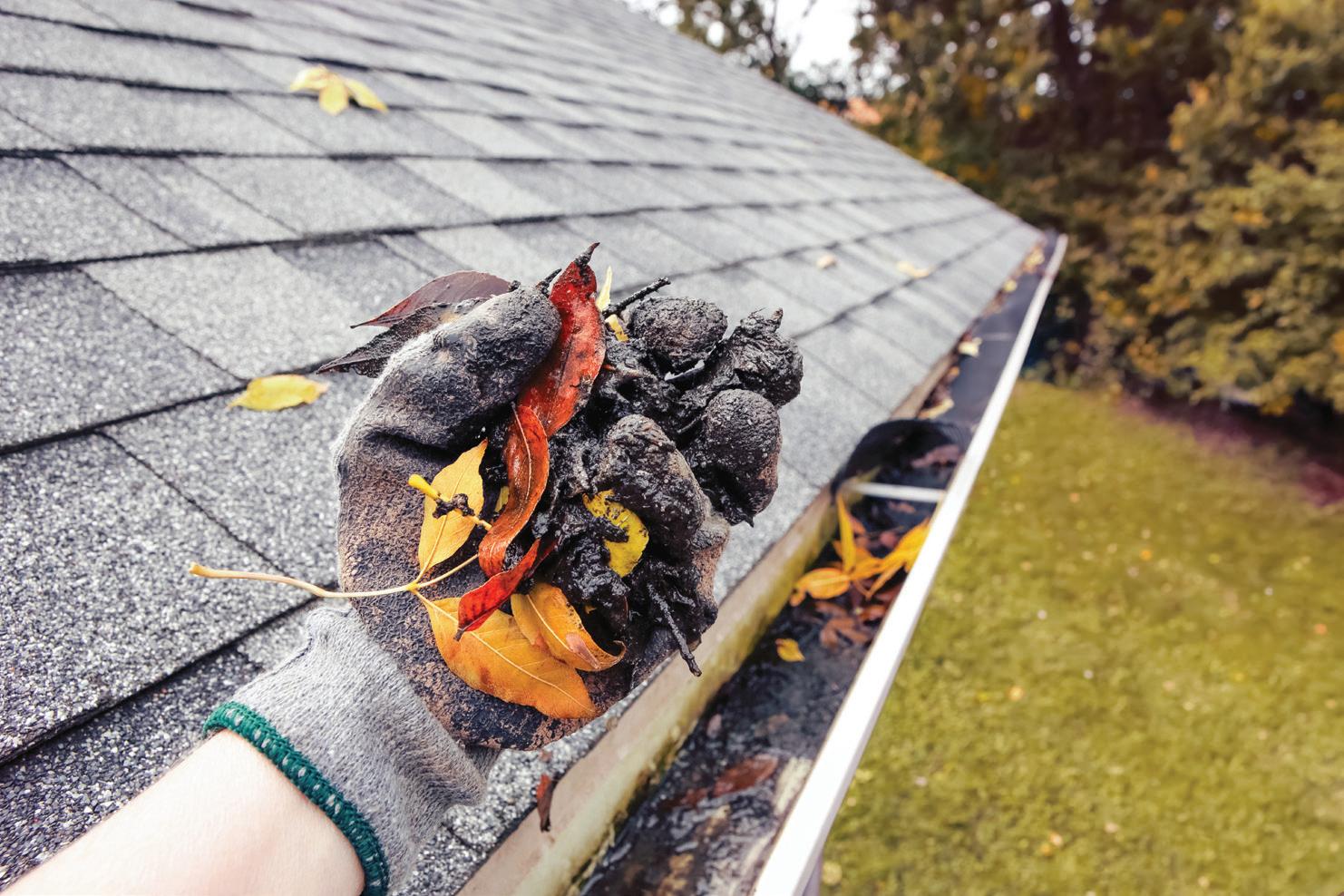


for


